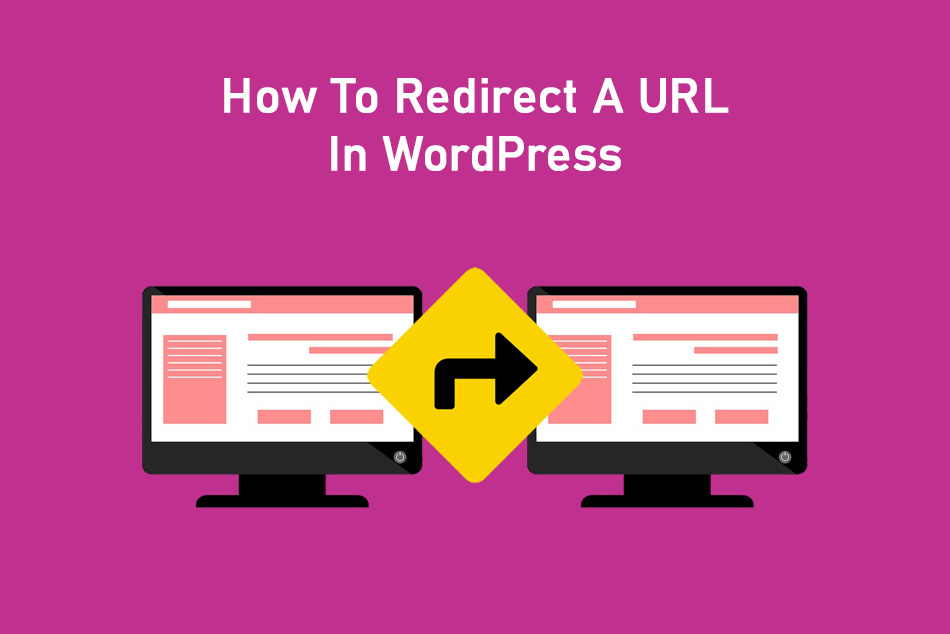If you have some old content and want to delete those pages and take users to a new page with updated content, then this post will show you how to redirect a URL in WordPress.
People who use WordPress frequently might know its usage and importance in today’s world. Most of the websites in the world, nowadays use WordPress because of its easy interface and varied features. Now, if you are using WordPress to grow your business, you will eventually realize that many pages need a separate part of your website. Many people, at this stage, might need to attach a URL that would direct users to the new part of their website and this can be done by setting up wildcard redirects, manual redirects and automatic redirects.
What Is Meant By URL Redirection?
As already mentioned, a URL would redirect readers to a new part of the website. This does not mean that you lose out on the old or existing information/ content but just that the location of the content has changed. A WordPress URL redirect helps users to know the exact new location of the content.
There are mainly 3 types of redirects. They are mentioned below:
- A ‘’301’’ redirect; is used when the old webpage has been permanently removed from the internet for some reason. This type of redirect is very common. Most e-commerce websites use it for redirecting browsers to the new page where they have featured new products and related information.
- A ‘’302’’ is a redirect which is used when the existing web page is temporarily removed. This is mostly used when the existing web page is under maintenance and the content is hence moved to a new page for a short time. Or, it is undergoing A/B tests to check if the same information can be produced in different ways.
- A ‘’meta refresh’’ tells the browser to refresh the site after a specific duration.
What is the need for redirecting a URL?
Redirections are important and necessary as it lets a user know that the page’s content has been moved to a separate link. There are many situations when using redirections becomes significant. Some of the situations are mentioned below:
- When a business is sold to some other party and hence the name is changed and so is the domain name.
- It enables search engines to know the ‘’expert source’’ in situations when there are many pages of the same organization with the same content. For example, if a company is promoting a particular product via various methods like videos, blogs, text messages, etc. A redirect from every advertisement type can lead the browsers to a single page where they can find detailed information about the product.
- If there occurs any kind of typing mistake in an ad or email, a redirect solves the problem by redirecting the browser to the correct one.
How do redirecting a URL affect SEO?
The main goal of the search engines is to provide valuable content to the browsers and hence they redirect them to pages which are trustworthy and authoritative. Most of the search engines, including Google have been designed in this way.
PageRank, a part of Google’s algorithm, values those websites more which have backlinks from trustworthy sites. If a website has a high PageRank score, it would probably rank higher in Google search. Similarly, as the website gets more high-quality URLs, Google will automatically rank them higher which will give that website more traffic than others. Contrary to this, if the redirect URLs do not redirect to something meaningful, the website might lose authority from Google.
How to redirect a URL in WordPress – The 3 Methods
There might be several ways to redirect a URL or posts to different websites or pages. Some of the ways are mentioned in this blog.
1. Manual Redirects
One such method is through manual redirects. At times, the Install WordPress plugin for redirection would not successfully redirect to the page you want your browsers to be at. For this, you might require to manually set up a redirect without using a plug-in.
Step 1: Click on ‘Tools’ and then ‘Redirection’ and scroll down until you find the ‘’Add new redirection’’ section.
Step 2: After this, you need to fill up some sections as visible on the screen. In the ‘Source URL’ field, paste or type the URL of the page from which you want to redirect your browser to a different page.
Step 3: In the ‘Target URL’, mention the URL of the page to which you want your browsers to get redirected.
Step 4: For the ‘Group’ field, either keep the default setting, i.e, ‘Redirections’ or select ‘Modified Posts’. This helps the browsers to know the type of redirections.
Step 5: After all the information is filled, click on the ‘’Add Redirect’’, which will add the redirect to the list of redirects.

2. Wildcard Redirects
Another way to redirect a URL is by setting up Wildcard Redirects. Wildcard redirect sends the browser using the old link to the new structured link. For example, if you have changed the structure of the existing permalink, you would require a Wildcard redirect to enable browsers to get redirected to the new structure link page. For this technique, the usage of the Regex function is very important.
The same steps need to be followed as the manual redirection. The only difference is that in the ‘Source URL’ field, after typing the existing link, add /oldslug/(.*)$ and in the ‘Target URL’ field, type /newslug/$1 after typing the new link. Finally, click on the ‘’Add Redirect’’ button as before.

3. Automated Redirects
Yet another method is Automated redirects. For this, you will need to install the Redirection plugin for WordPress. After installing it, you will see that it gives the option to automatically detect changes in the URL and accordingly set up the redirects. Not only this, but it also checks if there are any modifications made to the current pages and posts and set up redirects.

Conclusion
Hence, all the above-mentioned information surely clarifies how important redirects are. It enables users to preserve all their website’s content, especially in situations when the website needs some reorganisation or modifications. In this way, you do not have to remove your content from the existing website, you can just temporarily move it to a different page/link.


0 Comments